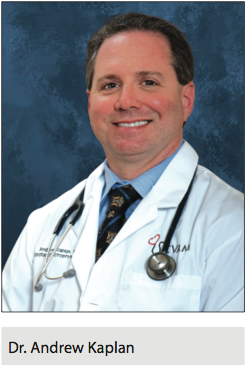ADVERTISEMENT
Three-Year Experience With the Robotic Catheter System
 Background
Background
In June 2010, one of the largest freestanding heart hospitals in the nation, Banner Heart Hospital, purchased the Sensei® X Robotic System (Hansen Medical). Banner Heart Hospital, an early adopter in the field of medical robotics, was the first facility in its primary service area to install the system. The Sensei robot was an investment made to help decrease the variability in procedure time, reduce radiation exposure for the physician (if seated at the remote workstation), and provide the ability to navigate atrial anatomy due to the “steerable” nature of its catheter and instinctive driving.1 A few months after implementation of this system, we published an article in EP Lab Digest describing our initial experience with the technology.3 The purpose of this new article is to provide an update on our use of the system three years later.
 About the Technology
About the Technology
The Sensei X Robotic System is a robotic navigation system comprised of two main components: the physician workstation and the robotically controlled arm at the patient table. The physician workstation allows the operator to perform procedures while sitting away from the radiation source, helping to reduce lead-related stress and fatigue.1 The robot attaches to the patient table, which for our institution, meant little to no retrofitting of the current EP labs. The robot employs force-sensing technology and instinctive three-dimensional control of a proprietary robotic catheter called the Artisan® Catheter. The Artisan is comprised of two guide sheaths (14 F sheath) and remains an open platform in which a manual catheter may be inserted.
The workstation has display screens that allow the physician to import fluoroscopy, intracardiac electrograms, navigational mapping, and intracardiac echocardiography. The system is fully integrated with St. Jude Medical’s EnSite Velocity™ mapping system and can also import 3D maps made via the Carto® mapping system from Biosense Webster.
Impact on EP Program
In October 2010, we completed a total of 19 robotic procedures with the Sensei, and Banner Heart Hospital reported a total of 953 electrophysiology procedures. Almost three years later, we will have logged 100 cases by the time of this publication, and a total of 1,740 EP procedures at Banner Heart Hospital.2
After the completion of 20 cases, I felt I had a clear understanding of the system and there was a plateau in the learning curve. After 100 cases, I am now not only confident in the capabilities of the robot, but have reached a new level of fluency. The robot allows the operator to focus on monitoring more variables and screens — an advantage in performing complex cases.
Use of the Sensei at Banner Heart Hospital has also decreased procedure time and radiation exposure, saving an average of 30 minutes per case in 2012 compared to the same data in 2011. My average case time is now three hours or less, which allows us to add an additional device implant case to our normal case load. In this way, the Sensei has helped increase lab efficiency. Furthermore, while radiation exposure previously averaged 16–18 minutes per case, radiation exposure is now around 10–12 minutes when performing a robotic case. Use of this system has allowed our physicians the ability to perform procedures while comfortably seated away from the radiation source, decreasing radiation exposure by approximately 35%.
Other Advantages
Each of the EP labs at Banner Heart Hospital offers state-of-the-art technology, including 3D mapping systems. The integration of the Sensei with the EnSite Velocity mapping system has further refined catheter manipulation to help address complex cardiac arrhythmias.
There have been instances where the Sensei has allowed me to extend care to patients who would not have normally been candidates, so this was worth the investment. Another advantage of this technology is that once the catheter reaches its destination, the robotic system holds the catheter extremely stable. With such a stable platform, we believe the Sensei has the potential to contribute to favorable procedural outcomes by ensuring tissue contact.
Summary
In 2010, the goal was to reduce total procedure time as well as fluoroscopy exposure to patients and the team. The hospital was also looking forward to the integration of the Sensei with the EnSite Velocity 3D mapping system and the increased usability it could potentially provide. Today, the Sensei robot is fully integrated with the 3D mapping system, and total procedure time and fluoroscopy exposure have also decreased. In addition, we have been able to use the robotic system to address patients who would not have normally been candidates for an electrophysiology procedure, continuing our commitment to elevated patient care.
Disclosure: Dr. Kaplan has no conflicts of interest to report.
References
- Kaiser CP. Texas Health Arlington Memorial Hospital Becoming a Center of Excellence. Cardiovascular Business. May 2011.
- Total EP procedures for Banner Heart Hospital is based on 2012 data.
- Kaplan A, Chan R. Initial experience with the Hansen Medical Sensei robotic catheter system. EP Lab Digest. 2010;10:24-27.











